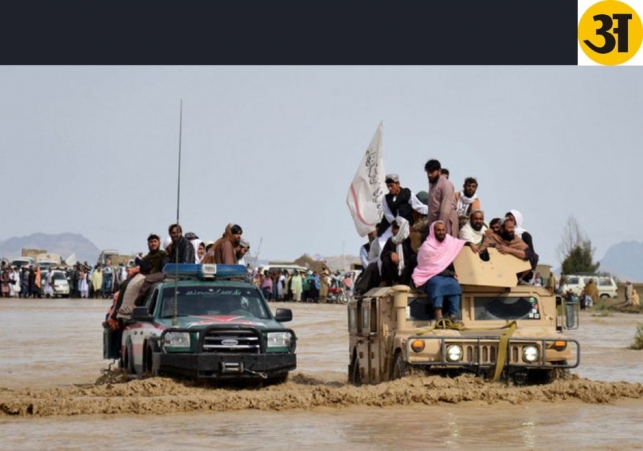
33 killed in Afghanistan flash flood tragedy
Deadly flash floods claim 33 lives in Afghanistan
- By Gurmehar --
- Sunday, 14 Apr, 2024
Over the course of three days, heavy rains and flash flooding have resulted in significant casualties and destruction in Afghanistan, according to the government's disaster management department.
Casualties and damage
At least 33 people have lost their lives in the floods, with an additional 27 individuals sustaining injuries. Most of the casualties were caused by roof collapses, and approximately 600 houses have been damaged or destroyed. Additionally, nearly 600 kilometers of roads have been demolished, and approximately 2,000 acres of farmland have been flooded away.
ALSO READ: Justin Trudeau addresses Chinese meddling in Canadian elections
The heavy rains come after an unusually dry winter season, leaving the terrain parched and forcing farmers to delay planting. The lack of moisture in the ground likely exacerbated the impact of the heavy rainfall, leading to flash floods and widespread devastation.
Since the Taliban regained power in 2021, the flow of foreign aid into Afghanistan has significantly decreased, hindering relief efforts in response to natural disasters. The limited resources available make it challenging for authorities to provide adequate assistance to affected communities in the aftermath of such calamities.
Previous incidents
This recent disaster follows previous incidents of natural calamities in Afghanistan, including a landslide in February that claimed the lives of at least 25 people due to massive snowfall. Additionally, around 60 individuals lost their lives in a three-week period of heavy precipitation ending in March.
ALSO READ: UK designates Pakistan as 'Too dangerous to travel' Nation amid security concerns
Scientists attribute the harsh weather patterns in Afghanistan to climate change, exacerbated by the country's four decades of war. Afghanistan ranks among the nations least prepared to face the impacts of climate change, further highlighting the vulnerability of its population to extreme weather events.
The devastating impact of heavy rains and flash floods in Afghanistan underscores the urgent need for enhanced disaster preparedness and response measures. With limited resources and ongoing challenges, addressing the effects of climate change and providing adequate support to affected communities remain critical priorities for the country.





